 "ttyymmnn" (ttyymmnn)
"ttyymmnn" (ttyymmnn)
01/22/2019 at 12:35 • Filed to: wingspan, Planelopnik, TDIAH
 4
4
 18
18
 "ttyymmnn" (ttyymmnn)
"ttyymmnn" (ttyymmnn)
01/22/2019 at 12:35 • Filed to: wingspan, Planelopnik, TDIAH |  4 4
|  18 18 |
!!! UNKNOWN CONTENT TYPE !!!
Welcome to
This Date in Aviation History
, getting of you caught up on milestones, important historical events and people in aviation from January 19 through January 22.
!!! UNKNOWN CONTENT TYPE !!!
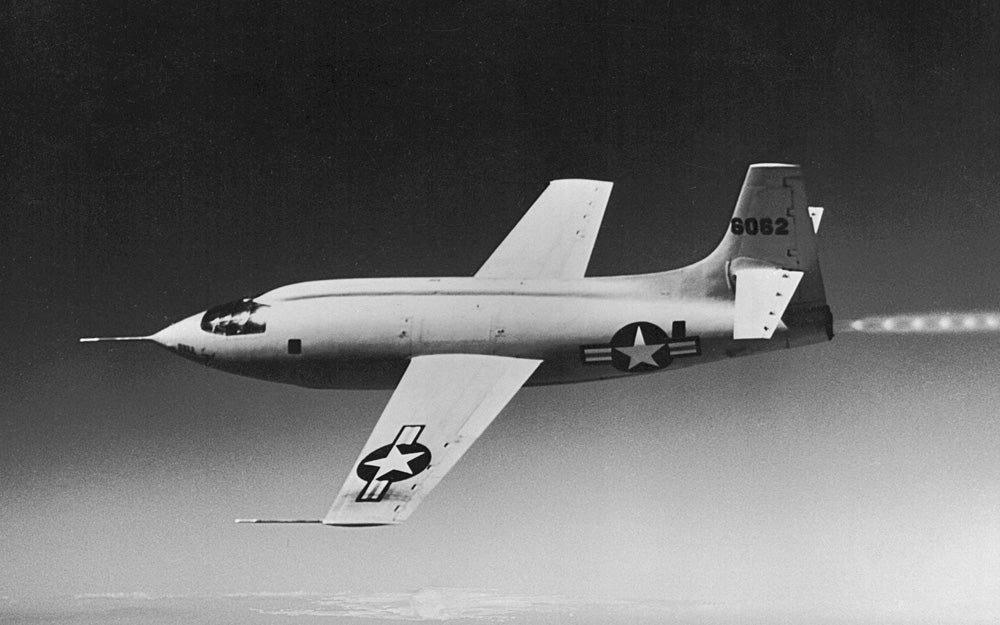
(NASA)
January 19, 1946 – The first flight of the Bell X-1. When the first operational jet aircraft arrived over the battlefield in WWII, the greater speeds they offered were harbingers of even higher speeds in the future, and the next milestone of speed was the speed of sound, or Mach 1. Nobody knew what would happen to a plane if it exceeded Mach 1, and some thought it wouldn’t even be possible, that the aircraft would become uncontrollable or even break apart. Initially, the British were at the forefront of the effort, with Miles Aircraft working with the British Ministry of Aviation to develop a turbojet engine that could reach 1,000 mph and soar to 36,000 feet. But the turbojet engines of the day could not reach such speeds at high altitude, and while rocket-powered models of the !!!error: Indecipherable SUB-paragraph formatting!!! were built, the ministry canceled the project in favor of development of the !!!error: Indecipherable SUB-paragraph formatting!!! .
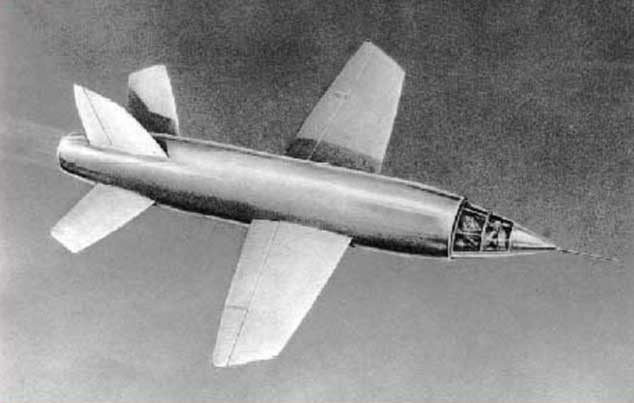
An artist’s rendering of the Miles M.52. Canceled three months before it was scheduled to fly, the M.52 bore a striking resemblance to the X-1, and Bell copied critical elements of the aircraft’s design. (UK Government)
However, one significant breakthrough did come out of the M.52 program. As an aircraft comes close to passing through the sound barrier, shock waves build up on the wings and control surfaces that can render the plane uncontrollable. Traditional aircraft used moving !!!error: Indecipherable SUB-paragraph formatting!!! fitted to the trailing edge of the horizontal stabilizer. But at supersonic speeds, the elevators could not be moved, so Miles employed a system where the entire horizontal tailplane moved, making control at high speeds possible. This all-moving elevator, dubbed the !!!error: Indecipherable SUB-paragraph formatting!!! , played an critical role in the development of the X-1, and it is an arrangement that is still in use to this day.
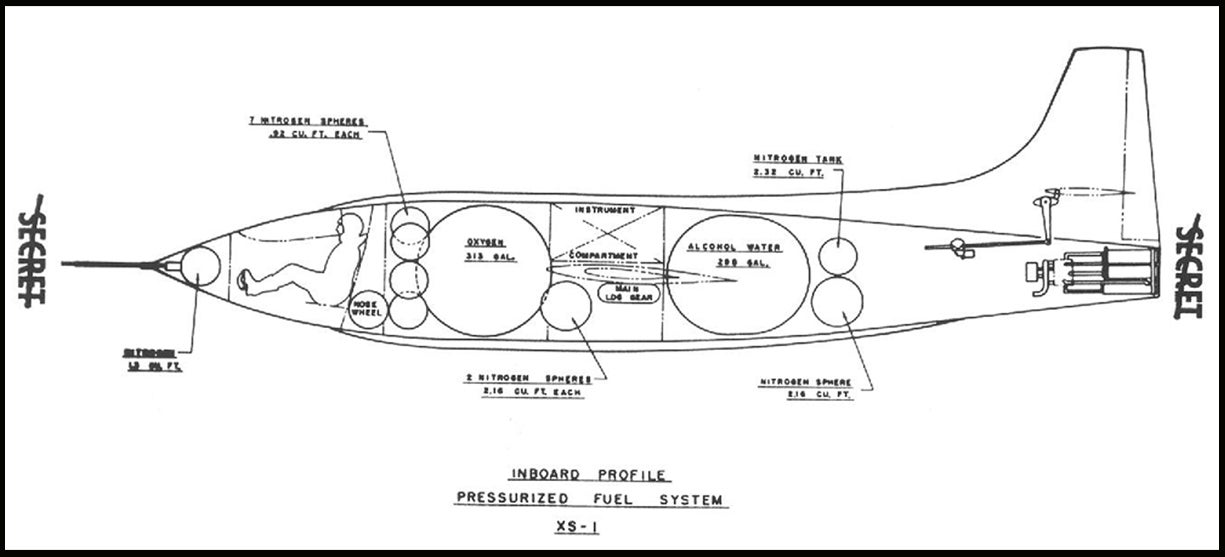
The bullet-shaped X-1, showing the arrangement of the pressurized elements of the fuel system that fed the rocket motor at the rear.
By 1944, Bell was working on their own supersonic plane, and the Air Ministry signed an agreement with the US to share data. Bell was allowed to inspect the Miles design, but Bell reneged on the sharing plan, and adopted the stabilator to their own aircraft (some prefer to say Bell stole it), which had up to that point employed a traditional tail. The general shape of the Miles and Bell aircraft was similar, but, since so little was known about supersonic aerodynamics, Bell designers looked at bullets that were known to travel supersonically. Thus, the X-1 was designed to mimic the shape of a .50 caliber bullet, a shape that was known to be stable at supersonic speeds. Though Miles had planned on a jet engine, the X-1 was built to be powered by a four-chamber rocket motor designed by !!!error: Indecipherable SUB-paragraph formatting!!! that burned ethyl alcohol diluted with water through a liquid oxygen oxidizer. Since little was known at the time about swept wings, the X-1 had traditional straight wings, though they were significantly thinner than those on contemporary piston-powered aircraft.
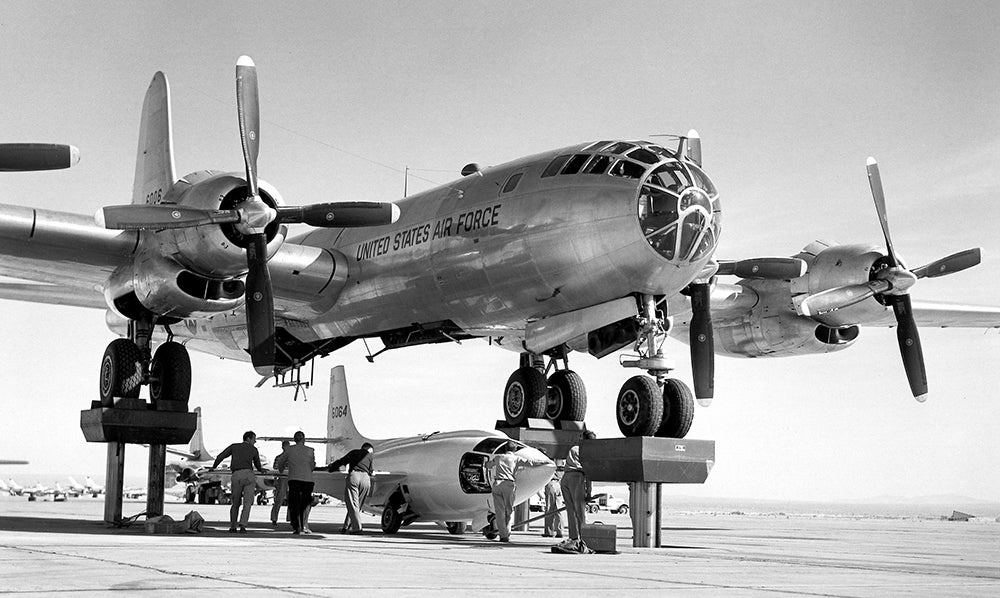 !!!CAPTION ERROR: MAY BE MULTI-LINE OR CONTAIN LINK!!!
!!!CAPTION ERROR: MAY BE MULTI-LINE OR CONTAIN LINK!!!
Test flights of the X-1 began with the maiden flight, a glide test piloted by Bell’s chief test pilot !!!error: Indecipherable SUB-paragraph formatting!!! . Woolams completed nine flights before his death while practicing for an air race, and the test flights were taken over by another Bell test pilot, !!!error: Indecipherable SUB-paragraph formatting!!! , who made a further 26 flights, including the first powered flight on December 9, 1946. Interservice squabbling, and a demand from Goodlin for a $150,000 should he successfully break the sound barrier, resulted in the project being taken over by the !!!error: Indecipherable SUB-paragraph formatting!!! (NACA), the predecessor to NASA, who planned to use the data obtained from the X-1 for future supersonic aircraft development.
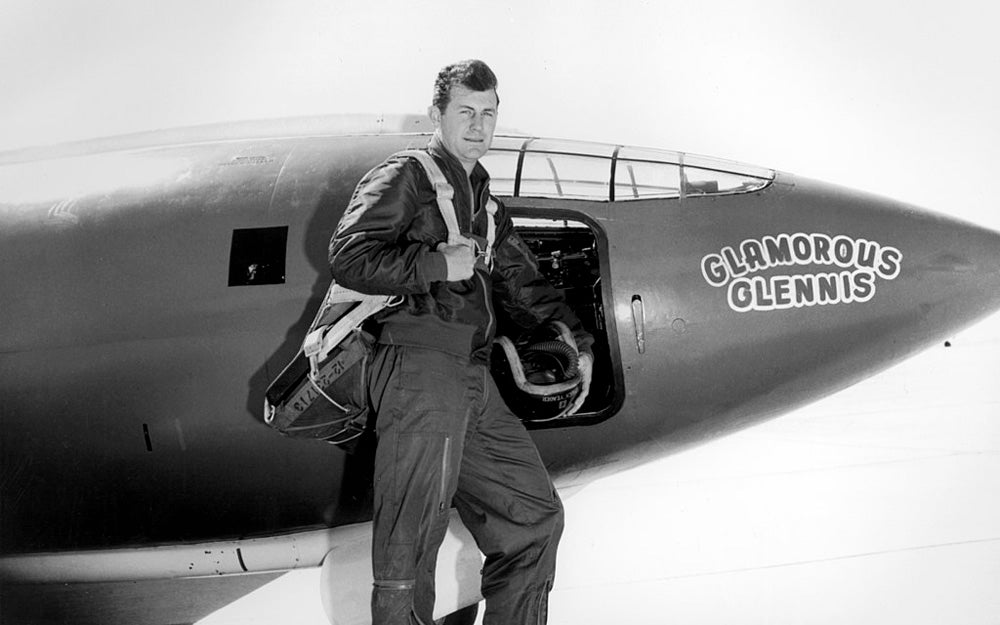
Yeager poses next to the X-1. The first X-1 was painted international orange to make it more visible. Later versions received white accents, and later aircraft were either bare aluminum or white. (NASA)
With the exit of Goodlin from the project, flying duties were taken over by USAF Captain
!!!error: Indecipherable SUB-paragraph formatting!!!
, who began his piloting career flying the P-51 Mustang over Europe and became an ace by downing five enemy aircraft in a single day. Working as a test pilot after the war, Yeager flew the X-1 past the sound barrier for the first time on October 14, 1947. Yeager had broken his ribs in a horse riding accident two days before, but didn’t report the injury, fearing that he would be excluded from the flight. Bell engineers rigged a broom handle so Yeager could close the hatch on the airplane. The X-1, nicknamed
Glamorous Glennis
in honor of Yeager’s wife, was slung beneath a modified
!!!error: Indecipherable SUB-paragraph formatting!!!
and then released over Rogers Dry Lake Bed in California. Yeager fired the rocket motor and reached a speed a Mach 1.06 (700 mph) at 45,000 feet, becoming the first pilot and plane to exceed Mach 1 in level flight. For the flight, Yeager, Bell president Lawrence Bell, and
!!!error: Indecipherable SUB-paragraph formatting!!!
of NACA all received the
!!!error: Indecipherable SUB-paragraph formatting!!!
(according to his biography, Yeager kept the trophy in his garage to store nuts and bolts). Bell produced five variants of the X-1, each testing different aspects of supersonic flight, as well as materials and systems for the manufacture and control of high-speed aircraft. The final variant, the X-1E, reached a speed of Mach 2.21 in 1958 with test pilot
!!!error: Indecipherable SUB-paragraph formatting!!!
at the controls.
!!! UNKNOWN CONTENT TYPE !!!
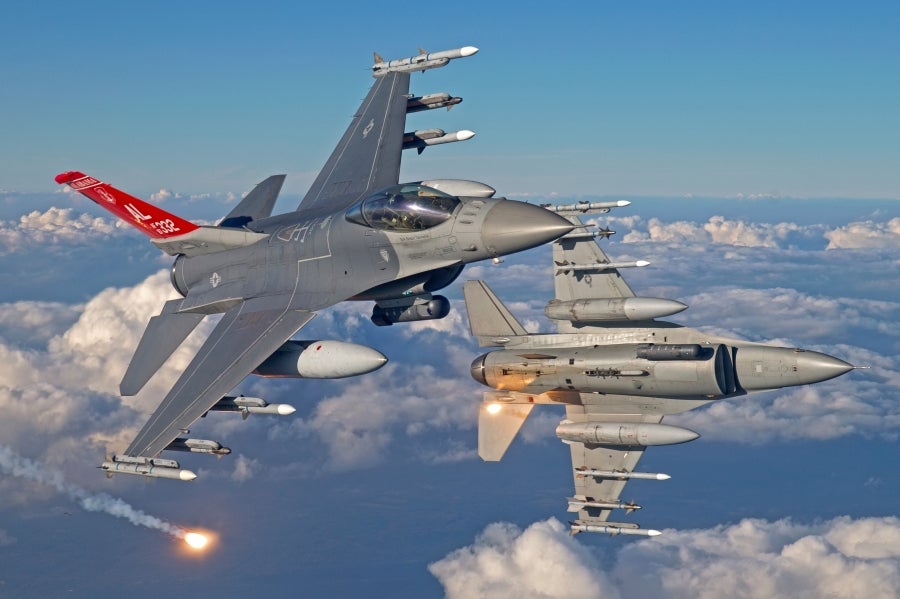
F-16 Fighting Falcons belonging to the 100th Fighter Squadron of the Air National Guard (US Air Force)
January 20, 1974 – The first flight of the General Dynamics F-16 Fighting Falcon. With the first flight of the !!!error: Indecipherable SUB-paragraph formatting!!! in 1972, the US Air Force knew they had a winner on their hands, a true air superiority fighter that could take control of the sky over the battlefield and hold on to it. But as good as the F-15 was (and still is), it was also big, and expensive, and the Air Force was concerned that they wouldn’t be able to afford enough of them to counter the hordes of Soviet fighters they would face if the Cold War suddenly became hot. Back in the 1960s, and based on experience with the heavy !!!error: Indecipherable SUB-paragraph formatting!!! against more nimble Russian fighters, Air Force Col. John Boyd, along with mathematician Thomas Christie, developed the !!!error: Indecipherable SUB-paragraph formatting!!! (E-M) which showed that small, lightweight aircraft would suffer the least amount of energy loss while maneuvering, especially when combined with a high thrust-to-weight ratio. Armed with that data, the Air Force announced the !!!error: Indecipherable SUB-paragraph formatting!!! (LWF) and requested proposals for an inexpensive, lightweight, and highly maneuverable aircraft. The request stated that the new fighter must have a high thrust-to-weight ratio, weigh no more than 20,000 lbs, and cost no more than $3 million per copy (the F-15 cost about $5 million in 1972 dollars).

The prototype YF-16 flies in formation with the prototype YF-17 during the competition to select a new lightweight fighter for the US Air Force (US Air Force)
Two companies responded to the request. Northrop submitted the twin-engine !!!error: Indecipherable SUB-paragraph formatting!!! , which was an enlarged derivative of their own lightweight !!!error: Indecipherable SUB-paragraph formatting!!! , while General Dynamics put forward the single-engine YF-16. To keep costs down, the YF-16 used the same engine that was powering the F-15, and as much as 58-percent of the components were interchangeable with other Air Force aircraft. Many of the parts, such as !!!error: Indecipherable SUB-paragraph formatting!!! , !!!error: Indecipherable SUB-paragraph formatting!!! , and landing gear, were reversible, meaning that the parts weren’t specific to one side of the aircraft. The large air intake was positioned below the pilot, and the front landing gear was set behind the intake to limit foreign object debris (FOD) from fouling the engine. The gun was also placed above and behind the intake to prevent the ingestion of muzzle gasses. In another innovation, the pilot’s seat was reclined at 30 degrees, and the rudder pedals raised, to allow the pilot to sustain higher G loads. And, rather than a central control stick, the pilot was given a joystick mounted on the right side of the cockpit.

A heavily armed F-16 Fighting Falcon from the 35th Fighter Wing “Wild Weasels” approaches an aerial tanker in the skies over Iraq during Operation Iraqi Freedom in 2003. (US Air Force)
Following the competition with the YF-17, the YF-16 was declared the winner of the LWF competition on January 13, 1975 (the YF-17 would eventually be developed into the !!!error: Indecipherable SUB-paragraph formatting!!! for the US Navy). The F-16 Fighting Falcon (or Viper, as it is sometimes called) was introduced in 1978 and saw its first combat action in the !!!error: Indecipherable SUB-paragraph formatting!!! of 1991, and has since seen combat in the Balkans, the Mediterranean and the Middle East, and remains the backbone of the US fighter and ground attack fleet. !!!error: Indecipherable SUB-paragraph formatting!!! purchased production rights of the F-16 in 1993 and, while the US Air Force is no longer procuring new F-16s with the arrival of its eventual replacement, the !!!error: Indecipherable SUB-paragraph formatting!!! Lockheed Martin is still building new aircraft for foreign customers, with just over 4,600 F-16s been built to date and exported to 28 countries. After forty years of service, the oldest F-16s have begun the conversion to QF-16 target drones which will be used to train the future generation of fighter pilots. The USAF Thunderbirds demonstration squadron has been flying the F-16 since 1983.

An F-16I Soufa (Storm) of the Israeli Air Force. Note the conformal fuel tanks added to the side of the fuselage to increase range while limiting drag. The added dorsal ridge houses avionics, chaff and flare dispensers, as well as the in-flight refueling receptacle. (Israeli Air Force)
Note : While January 20, 1974 marks the first flight of the YF-16, that flight was entirely unintentional. Test pilot Phil Oestricher was performing a routine taxi test when he experienced roll-control oscillation that caused the wingtips to strike the ground. In a split-second decision, Oestricher chose to take off rather than continue the taxi test and, after a brief six-minute flight, he returned without incident. The official maiden flight took place on February 2.
!!! UNKNOWN CONTENT TYPE !!!
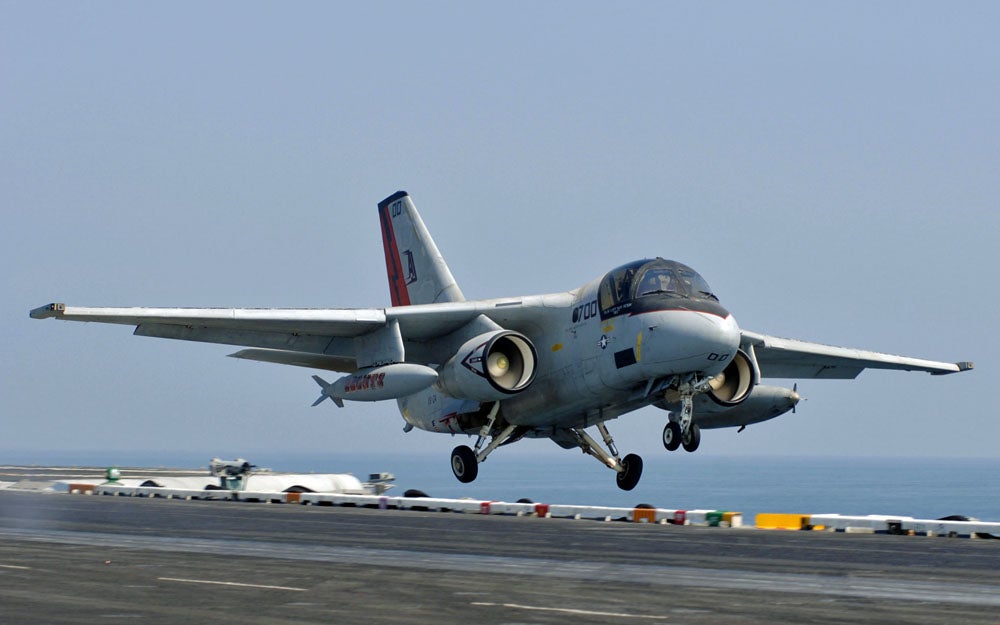
(US Navy)
January 21, 1972 – The first flight of the Lockheed S-3 Viking.
Submarines, which prowl the ocean depths and loose their torpedoes against unsuspecting ships, have been a constant menace to surface fleets since World War I. The early diesel-electric submarines spent the majority of their cruise on the surface, but the arrival of the nuclear-powered
!!!error: Indecipherable SUB-paragraph formatting!!!
(SSN 571) in 1954 signaled a quantum leap in capability over its ancestors, primarily due to the sub’s ability to stay submerged for long periods of time and cover vast distances out of sight beneath the world’s oceans. Once nuclear submarines gained the capability to launch nuclear missiles, the task of finding and destroying enemy subs became of paramount importance.
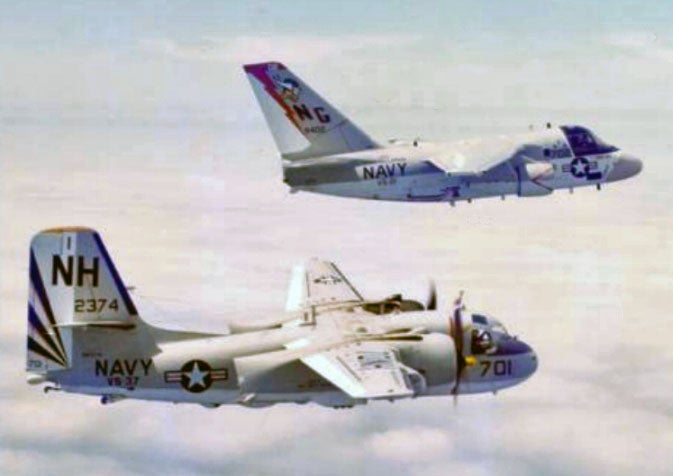
An S-3 Viking flies alongside a Grumman S-2 Tracker, the aircraft it replaced, in 1976 (US Navy)
The year 1954 also marked the arrival of the the !!!error: Indecipherable SUB-paragraph formatting!!! , the US Navy’s first purpose-built antisubmarine warfare (ASW) aircraft. But as submarines began diving deeper and moving faster, and more quietly, the Navy issued a proposal in 1967 for a more modern aircraft that would be capable of operating from their carrier fleet. They received proposals from five companies, including a joint proposal from Lockheed and Ling Temco Vought (LTV). The Lockheed offering was chosen as the winner in 1969, and design and production of the S-3 was divided among the partners. LTV, with more experience building carrier aircraft, produced the wings, tail, landing gear, and engine pods while Lockheed built the fuselage and coordinated the finally assembly and integration of the components. Univac produced the computers and data processing components. Following the success of the Viking prototype’s maiden flight, the Navy allocated additional money to build eight more research and development aircraft, and orders for 179 aircraft quickly followed, such was the perceived need for the Viking.
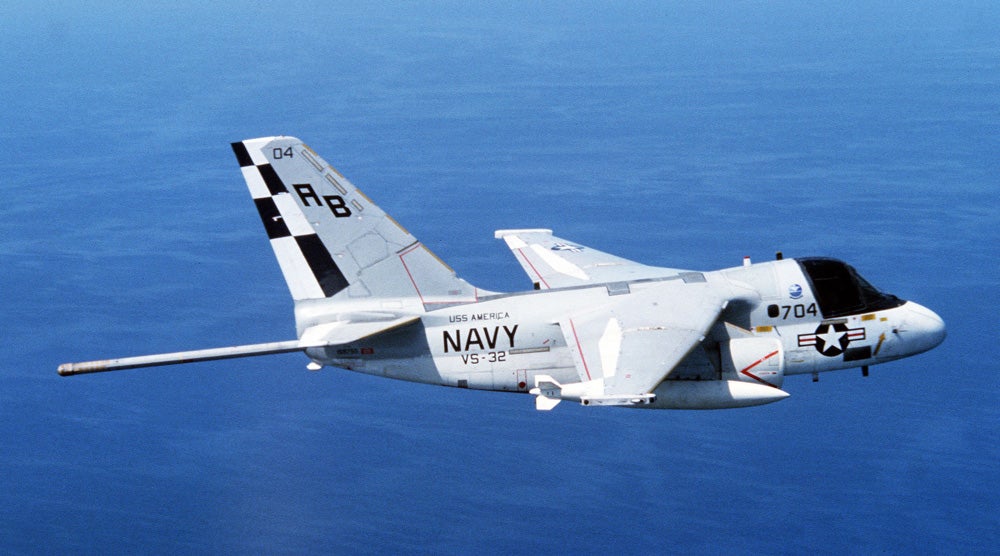 !!!CAPTION ERROR: MAY BE MULTI-LINE OR CONTAIN LINK!!!
!!!CAPTION ERROR: MAY BE MULTI-LINE OR CONTAIN LINK!!!
The S-3 was powered by a pair of !!!error: Indecipherable SUB-paragraph formatting!!! high bypass turbofans that give the Viking excellent range and loiter time while hunting for submarines. It carries a crew of four (three officers plus one enlisted), with the pilot and copilot/tactical coordinator in the front seats and the tactical coordinator and sensor operator in the back. For hunting submarines, the Viking was equipped with an AN/APS-116 sear search radar, forward looking infrared (FLIR), up to 16 sonobuoys that could be dropped to detect submarines underwater, and a magnetic anomaly detector (MAD) boom that could track subs based on changes to the Earth’s magnetic field caused by the passage of the submarine. Unlike earlier aircraft like the S-2 or the !!!error: Indecipherable SUB-paragraph formatting!!! , the crew could share data between their screens and combine sensor information, making the 4-man crew as effective as a 12-man Orion crew. Once a sub was detected, the Viking crew could call on nearly 5,000 pounds of bombs, torpedoes, depth charges or missiles at their disposal. Anti-shipping missiles could also be fitted.
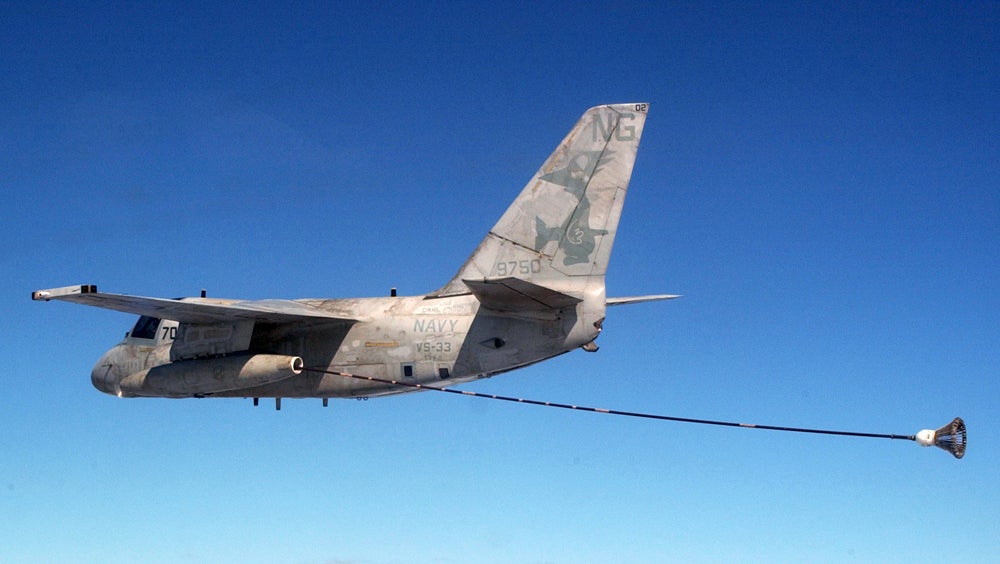 !!!CAPTION ERROR: MAY BE MULTI-LINE OR CONTAIN LINK!!!
!!!CAPTION ERROR: MAY BE MULTI-LINE OR CONTAIN LINK!!!
The Viking became operational in 1974 and immediately began their sub hunting duties to detect enemy ballistic missile submarines and protect the
!!!error: Indecipherable SUB-paragraph formatting!!!
. Following the
!!!error: Indecipherable SUB-paragraph formatting!!!
of the Soviet Union in 1991, and the subsequent breakup of the Warsaw Pact, the threat of Russian submarines was greatly reduced, most of the Viking’s sub hunting gear was removed and the S-3's role became primarily sea surface search and anti-surface warfare. With the retirement of the
!!!error: Indecipherable SUB-paragraph formatting!!!
tanker, the S-3B became the primary aerial tanker for the fleet. The S-3 saw service in the 1991
!!!error: Indecipherable SUB-paragraph formatting!!!
and the
!!!error: Indecipherable SUB-paragraph formatting!!!
, but by 2009 the Navy announced the retirement of the Viking from carrier service, and its role was taken over by other fixed wing aircraft already in the Navy’s arsenal. A total of 188 Vikings were produced from 1974-1978, and the final Viking was retired from Navy service on January 11, 2016.
!!! UNKNOWN CONTENT TYPE !!!
Short Takeoff
!!! UNKNOWN CONTENT TYPE !!!
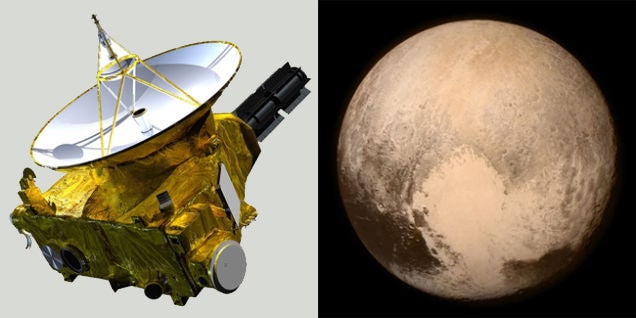
(NASA)
January 19, 2006 – The launch of the New Horizons interplanetary space probe. The New Horizons probe was launched by NASA to perform the first flyby of the dwarf planet Pluto and to return close-up pictures to Earth of the farthest planet from the Sun for the first time. Part of the NASA’s !!!error: Indecipherable SUB-paragraph formatting!!! program, which also includes study of Jupiter and Venus, New Horizons became the first spacecraft to explore Pluto when it arrived on July 14, 2015 after a nine-year journey. Following its flypast of Pluto, New Horizons maneuvered for a flyby of object !!!error: Indecipherable SUB-paragraph formatting!!! in the !!!error: Indecipherable SUB-paragraph formatting!!! , the farthest object from the Sun ever visited by a spacecraft. New Horizons photographed the snowman-shaped object on January 1, 2019.
!!! UNKNOWN CONTENT TYPE !!!
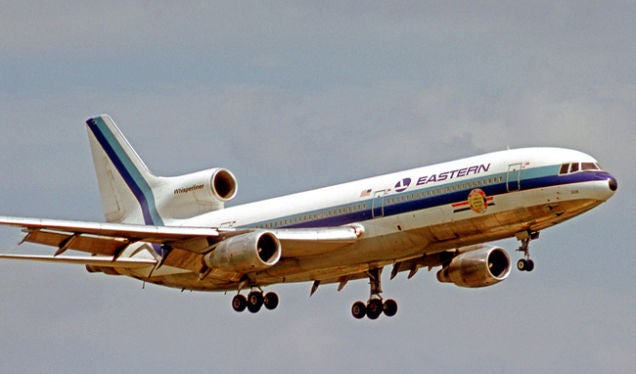 !!!CAPTION ERROR: MAY BE MULTI-LINE OR CONTAIN LINK!!!
!!!CAPTION ERROR: MAY BE MULTI-LINE OR CONTAIN LINK!!!
January 19, 1991 – Eastern Air Lines is dissolved.
Following the
!!!error: Indecipherable SUB-paragraph formatting!!!
of 1930, Eastern became one of the “Big Four” airlines (Eastern, American, TWA, United) created by the US government to handle passenger travel separately from air mail delivery. Led at first by WWI fighter ace
!!!error: Indecipherable SUB-paragraph formatting!!!
, Eastern enjoyed a near monopoly of the air routes on the East Coast, particularly between New York and Florida, into the 1950s. But by the late 1970s, Eastern struggled with labor disputes and high debt under the leadership of former astronaut
!!!error: Indecipherable SUB-paragraph formatting!!!
, and the company was eventually taken over by
!!!error: Indecipherable SUB-paragraph formatting!!!
in 1985, who moved many of the company’s assets to his other airlines, Continental and Texas Air. Following more labor disputes and a strike in 1989, Lorenzo liquidated the storied airline in 1991 after 64 years of continuous operation.
!!! UNKNOWN CONTENT TYPE !!!
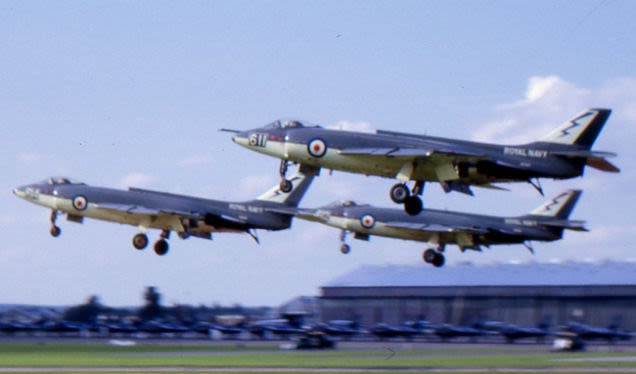 !!!CAPTION ERROR: MAY BE MULTI-LINE OR CONTAIN LINK!!!
!!!CAPTION ERROR: MAY BE MULTI-LINE OR CONTAIN LINK!!!
January 19, 1956 – The first flight of the Supermarine Scimitar. The Scimitar began as part of a study to develop a fighter with no undercarriage that would land on a sprung rubber deck. After the Royal Navy abandoned that idea, Supermarine developed the aircraft into a more traditional fighter called the Type 508. That aircraft was subsequently developed into the Scimitar, and Royal Navy ordered 100 aircraft but changed its role from a fighter to a low level strike aircraft capable of delivering nuclear weapons. Ultimately, only 76 Scimitars were produced, and a high accident rate, including the death of Commander John Russell due to an arrester wire failure that was !!!error: Indecipherable SUB-paragraph formatting!!! by Pathé News, led to its replacement by the !!!error: Indecipherable SUB-paragraph formatting!!! and !!!error: Indecipherable SUB-paragraph formatting!!! .
!!! UNKNOWN CONTENT TYPE !!!

(Canadian Department of National Defence)
January 19, 1950 – The first flight of the Avro Canada CF-100 Canuck. The Canuck, known affectionately to its pilots as “Clunk,” was the only domestically-produced Canadian fighter to enter mass production. Its all-weather capability, powerful engines and radar, short takeoff roll and high rate of climb made the Canuck an ideal interceptor, a role which it filled for the RCAF throughout the Cold War. The CF-100 was called on to patrol the vast reaches of North America as part of NORAD to intercept Russian bombers on reconaissance missions, and was so ruggedly built that initial estimates of a 2,000 hour lifespan actually turned out to be 20,000 hours in frontline use. After its introduction in 1952, nearly 700 Canucks were produced before it was replaced by the the !!!error: Indecipherable SUB-paragraph formatting!!! and retired in 1982.
!!! UNKNOWN CONTENT TYPE !!!
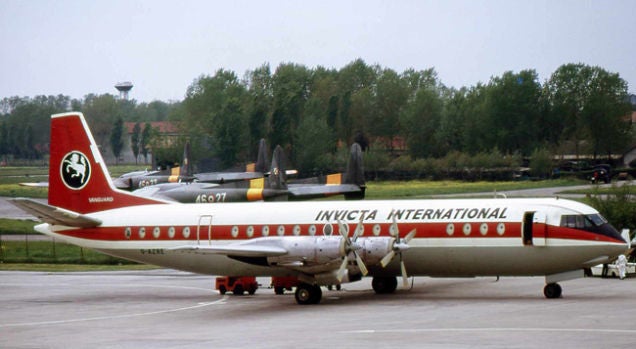 !!!CAPTION ERROR: MAY BE MULTI-LINE OR CONTAIN LINK!!!
!!!CAPTION ERROR: MAY BE MULTI-LINE OR CONTAIN LINK!!!
January 20, 1959 – The first flight of the Vickers Vanguard, a short- to medium-range turboprop airliner. An enlarged version of the successful !!!error: Indecipherable SUB-paragraph formatting!!! , the Vanguard was a victim of bad timing, as it was introduced at just about the same time as new jet-powered airliners, and sales suffered as a result. After ten years of service, Vickers introduced a cargo version called the Cargolifter, and that variant saw relatively good success, with older airliner versions subsequently converted to the cargo configuration. Forty-four Vanguards were produced, and the last was retired in 1996.
!!! UNKNOWN CONTENT TYPE !!!

(NASA)
January 20, 1930 – The birth of Edwin Eugene “Buzz” Aldrin.
An engineer and astronaut, Aldrin was the pilot of the
!!!error: Indecipherable SUB-paragraph formatting!!!
Lunar Module and performed the first manned landing on the lunar surface. After
!!!error: Indecipherable SUB-paragraph formatting!!!
made his “giant leap for mankind,” Aldrin became the second man to set foot on the Moon. Before NASA, Aldrin graduated from West Point and served in Korea as a fighter pilot, where he flew the
!!!error: Indecipherable SUB-paragraph formatting!!!
on 66 combat missions and shot down two
!!!error: Indecipherable SUB-paragraph formatting!!!
fighters. Prior to his Apollo 11 mission, Aldrin flew the final
!!!error: Indecipherable SUB-paragraph formatting!!!
mission with
!!!error: Indecipherable SUB-paragraph formatting!!!
and performed a 2 hour and 20 minute spacewalk. Aldrin left NASA in 1971 to become the Commandant of the
!!!error: Indecipherable SUB-paragraph formatting!!!
at Edwards AFB, and retired from the military the following year.
!!! UNKNOWN CONTENT TYPE !!!

(NASA)
January 22, 1992 – The launch of Space Shuttle Discovery on STS-42 carrying the first Canadian woman into space.
Astronaut Roberta Bondar flew
as part of an international crew that also carried the first German astronaut,
!!!error: Indecipherable SUB-paragraph formatting!!!
, on his second trip into Earth orbit. A neurologist, Bondar started training to be an astronaut in 1984. During her eight-day Shuttle flight, she served as a Payload Specialist for the International Microgravity Laboratory Mission and performed experiments inside the Shuttles pressurized
!!!error: Indecipherable SUB-paragraph formatting!!!
. Following her Shuttle mission, Bondar worked for more than 10 years with NASA, leading an international research team to find ways to help humans recover from the weightlessness of space travel.
!!! UNKNOWN CONTENT TYPE !!!
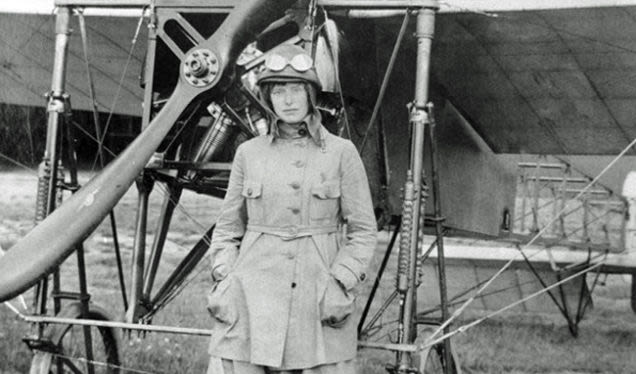
(Author unknown)
January 22, 1922 – The death of Elsa Andersson. The daughter of a farmer, Andersson aspired to be more than just a farmer’s wife. At age 24, she learned to fly and became Sweden’s first woman pilot. Following that achievement, Andersson traveled to Germany to learn how to parachute, and toured as a parachuting stunt performer, often diving head first out of the airplane and performing acrobatics during free fall. Her untimely death came in the third jump of the day at a show Askersund, Sweden. In front of 4,000 spectators, Andersson’s parachute malfunctioned and opened too close to the ground to slow her fall. Andersson was 25 years old.
!!! UNKNOWN CONTENT TYPE !!!

(Author unknown)
January 22, 1892 – The birth of Marcel Dassault. Born Marcel Bloch, Dassault made his first contribution to aviation by designing an aircraft propeller during WWI, and later founded his own aircraft manufacturing company, the Société des Avions Marcel Bloch . Of Jewish parentage, Bloch took the name Dassault, deriving it from char d’assaut , the French work for battle tank . During WWII, Dassault refused to collaborate with the !!!error: Indecipherable SUB-paragraph formatting!!! , a French company created during the German occupation of France, so he was sent to the !!!error: Indecipherable SUB-paragraph formatting!!! concentration camp until its liberation in 1945. In 1947, his company became the Société des Avions Marcel Dassault, which designed the first French jet fighter to enter production, the !!!error: Indecipherable SUB-paragraph formatting!!! . !!!error: Indecipherable SUB-paragraph formatting!!! is now the premiere French manufacturer of military, business and regional jets. Dassault died in 1986.
!!! UNKNOWN CONTENT TYPE !!!
Connecting Flights
!!! UNKNOWN CONTENT TYPE !!!
!!! UNKNOWN CONTENT TYPE !!!
!!! UNKNOWN CONTENT TYPE !!!
!!! UNKNOWN CONTENT TYPE !!!
!!! UNKNOWN CONTENT TYPE !!!
If you enjoy these Aviation History posts, please let me know in the comments. And if you missed any of the past articles, you can find them all at
!!!error: Indecipherable SUB-paragraph formatting!!!
. You can also find more stories about aviation, aviators and airplane oddities at
!!!error: Indecipherable SUB-paragraph formatting!!!
.
!!! UNKNOWN CONTENT TYPE !!!
 For Sweden
> ttyymmnn
For Sweden
> ttyymmnn
01/22/2019 at 12:45 |
|
F-16 is becoming an old boi
 ttyymmnn
> For Sweden
ttyymmnn
> For Sweden
01/22/2019 at 12:57 |
|
It really is. When I was in high school in the mid-80s, swooning over the F-15, I was surprised to learn that it made its maiden flight in 1972. I had a buddy who was convicted that the Tomcat was the better airplane. Forgetting that they had two distinctly different missions, which one is still flying? And which one is the AF looking to buy more of ?
 For Sweden
> ttyymmnn
For Sweden
> ttyymmnn
01/22/2019 at 13:02 |
|
Grumman BTFO
 InFierority Complex
> ttyymmnn
InFierority Complex
> ttyymmnn
01/22/2019 at 13:18 |
|
It’s weird to me to think that the F-16 was a contemporary of things like this
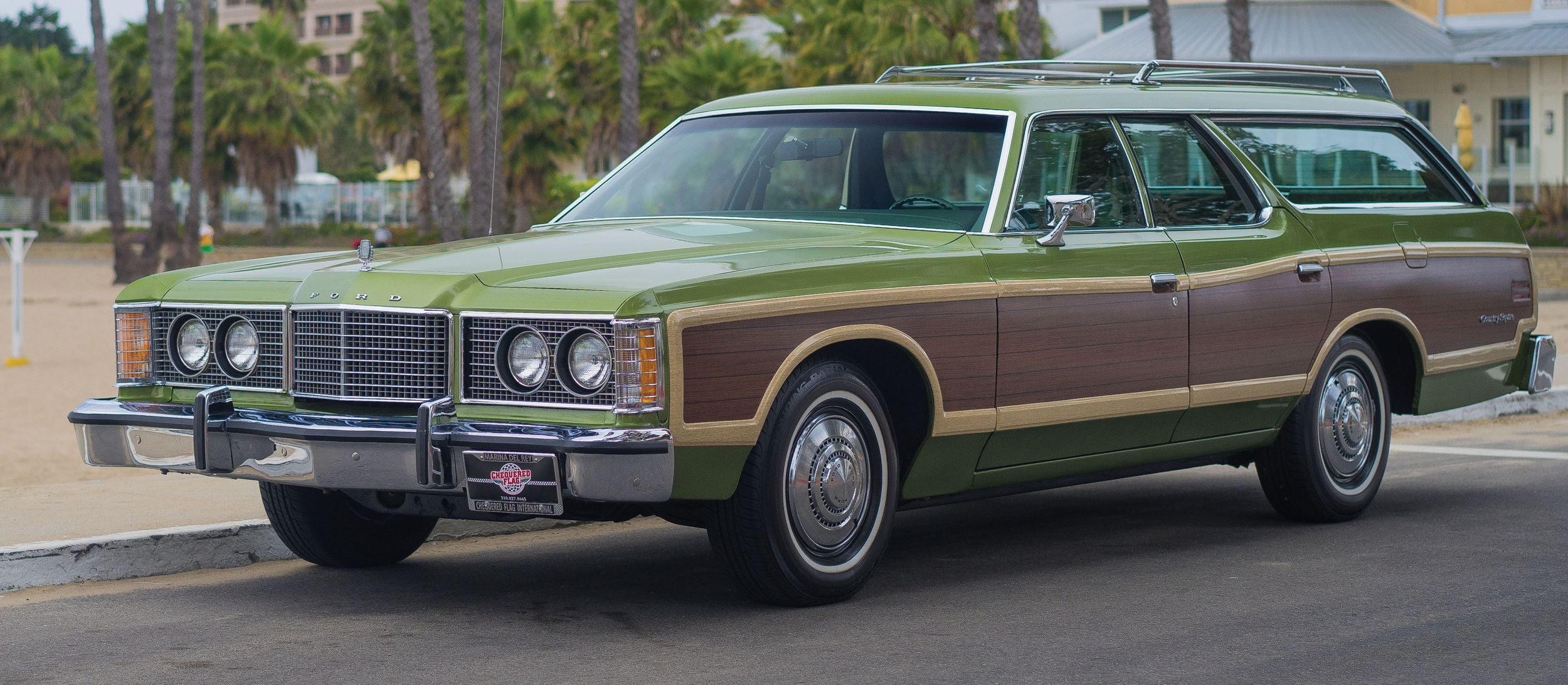
Hell, I think my own car was being designed during the same period.
 ttyymmnn
> InFierority Complex
ttyymmnn
> InFierority Complex
01/22/2019 at 13:23 |
|
Interesting comparison. And the F-15 flew two years before that. Interestingly, the AF is looking to restart domestic F-15 production with the F-15X, which will replace the ancient C/D dogfighters and complement the F-22.
 InFierority Complex
> ttyymmnn
InFierority Complex
> ttyymmnn
01/22/2019 at 13:37 |
|
Just can get a handle of things in context I guess, the first episode of Happy Days was in 1974. Our skies are being defended by 70s restomods. ;)
 ttyymmnn
> InFierority Complex
ttyymmnn
> InFierority Complex
01/22/2019 at 13:38 |
|

 Highlander-Datsuns are Forever
> ttyymmnn
Highlander-Datsuns are Forever
> ttyymmnn
01/22/2019 at 13:52 |
|
My neighbor flew for Eastern a few times in the late 80's early 90's during pilot str
ikes. I want to say 757's. I think he was looking for flight hours and money to feed his family. He went on to fly Citation’s for a wealthy montana business man for years and years.
 facw
> ttyymmnn
facw
> ttyymmnn
01/22/2019 at 14:13 |
|
It’s not really restarting production right? Boeing still has production lines going for export . I think they are only building two-seat models now, so maybe they’ll have to dust off some of the old cockpit tooling, but Strike Eagle variants are still rolling off the line in St. Louis as far as I know.
 ttyymmnn
> Highlander-Datsuns are Forever
ttyymmnn
> Highlander-Datsuns are Forever
01/22/2019 at 14:13 |
|
He went on to fly Citation’s for a wealthy montana business man for years and years.
I’m not sure which would be better. An airline gig would be steady, but the hours would be long. The private pilot gig would be more interesting, but you’d be at the guy’s beck and call 24/7.
 ttyymmnn
> facw
ttyymmnn
> facw
01/22/2019 at 14:18 |
|
Yes . I meant that they were restarting on single seaters.
 facw
> ttyymmnn
facw
> ttyymmnn
01/22/2019 at 14:21 |
|
Well the Tomcat isn’t still flying because its distinctly different mission isn’t so relevant these days. Has no bearing on how good of a plane it was (and of course concerns about Iran might also have factored in) . The smaller number of Tomcats also made it less appealing to upgrade in the way the F-15s have been.
Also, the AF is looking to buy more, but I suspect there’s politics in play there. The end of F-15 production is in sight, and I imagine there’s significant political pressure to keep that line open longer, especially since no export customers probably means the Super Hornet production (at the same facility) will be in danger in the near future as well (they think they can keep production through 2025, but it’s hard to see where demand will come from beyond that) .
 Highlander-Datsuns are Forever
> ttyymmnn
Highlander-Datsuns are Forever
> ttyymmnn
01/22/2019 at 14:27 |
|
The business man wasn’t that bad, it was his wife and entitled
wealthy friends. I be he missed holidays
with his family 2/3's of the time. Finally he started taking his wife with him over the holidays just in case
they messed up his schedule. They flew to Palm Spring a lot.
 ttyymmnn
> facw
ttyymmnn
> facw
01/22/2019 at 14:34 |
|
It was an apples to oranges argument, and nothing more than kid rivalry. Most arguments about “better” or “best” fighters or whatever is kind of silly. It’s better to make a list of top 5 or top 10, since all aircraft have different strengths and weaknesses.
Yes, I imagine politics has some play in it. B ut there is also the fact that we have far too few F-22s, and you can make a bad-ass new F-15, and plenty of them, for far less (I imagine ) than trying to restart the F-22 line, if that’s even possible.
Here’s a n interesting article from 2014, talking about the interdependence of the F-22 and F-35. I would imagine that an advanced F-15 would perform a similar role to the F-22, or fill a gap in capability that would free up both the F-22 and F-35 to do what they do best.
 facw
> InFierority Complex
facw
> InFierority Complex
01/22/2019 at 14:34 |
|
It is a bit hard to believe. If you just look at the plane, I think you’d say it’s much more similar to ‘90s car design. This is the closest I can get to one in teal:

Took a couple decades for sleek aerodynamics to become become popular I guess.
 facw
> ttyymmnn
facw
> ttyymmnn
01/22/2019 at 14:58 |
|
From what I’ve read, if we we bought 200 new F-22s, we could probably manage a cost per plane of somewhere between $150- 200M. It’s a bit hard to find out what F-15s actually cost. The listed flyaway cost of the last batch we bought (Strike Eagles, but probably more comparable to the F-15X than an F-15C) would be around $50M in today’s money, but South Korea paid more like $125M a piece for their F-15Ks. Qatar paid over a half a billion each for its recent order, but that bundled spares, support, and additional items. I’d figure that when you account for whatever changes they have to make specific to X, you’d probably be looking at at a situation where the F-22 was something like 50-100% more expensive than the F-15, and to be honest I think those savings might be penny-wise and pound foolish.
That said, we probably aren’t going to build 200 new F-22s, and even at 100 aircraft, amortizing the line restart costs would be prohibitively expensive. With the F-15 line still active, it’s probably possible to support a much smaller order, so if you only wanted 50 planes you could have that (the Air Force currently has 200+ F-15s, but the plan has been to replace most of them with F-35s, and then keep the 50 or so newest and most upgraded F-15Cs around. I believe the idea behind ordering the F-15X would be to be able to retire those aging air frames sooner, rather than to eliminate F-35 replacements.)
I’d assume you’d use the F-15s for things like arctic air defense, where they are perfectly capable of intercepting a Bear, or even a Blackjack. In a war against a peer state they might be able to serve as missile boats to provide additional capability once F-22s and F-35s have expended their internal stores. T he empty stealth fighters could still serve as forward spotters at that point, though the reverse is potentially more useful, there’s not a huge disadvantage to having a non-stealthy fighter blast its radar and then pass targeting info to stealth fighters advancing unseen in front of it . Carrying a bunch of missiles might also be advantageous against drone or cruise missile swarms. I think there’s definitely a place for 4th/4.5th generation fighters (stealth isn’t needed everywhere), but I do wonder if it would be more economically responsible to just keep the F-15Cs in the air, or fill the role with F-16s.
 pip bip - choose Corrour
> ttyymmnn
pip bip - choose Corrour
> ttyymmnn
01/23/2019 at 04:50 |
|
https://www.9news.com.au/2019/01/23/11/46/boeing-727-last-commerical-flight-iran
 ttyymmnn
> pip bip - choose Corrour
ttyymmnn
> pip bip - choose Corrour
01/23/2019 at 08:21 |
|
I saw that, thanks. I just haven’t had the time to write about it!